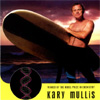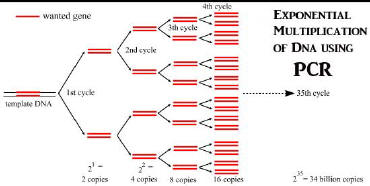|
 Karry
Mullis 1984 While enroute to a ski trip he pulled over on the road and
formulated the
PCR while his
girl friend slept in the passenger seat. Karry
Mullis 1984 While enroute to a ski trip he pulled over on the road and
formulated the
PCR while his
girl friend slept in the passenger seat.
His parent company (CETUS) kept the patent
for this revolutionary process but he won the Nobel prize in 1993 because
of the dramatic accelerating effect it had on genetics studies.
PCR uses a simple process to amplify sections of
DNA for further study.
For example lets say that a few hairs are found at the site of a crime ,
the DNA in the few cells can be multiplied exponentially to sufficient
levels to allow for identification procedures that might be
used as evidence.
If you recall the process of DNA replication and the fact that the
polymerase and some other vital ingredients used in PCR were taken from
Thermus aquaticus bacteria found in extremely hot springs,
Taq Polymerase,
it is fairly easy to understand the PCR process.
Procedure
1) A piece of target DNA is denatured (opened up) by
heating at 95*C
2) Cool to 55* while synthetically produced
DNA (not RNA) primers anneal to the 3' end of the
DNA fragments.
3) Heat up top 72* and Taq
Polymerase elongates the new strand in the 5' direction from the primers
using synthetic nucleotides supplied in solution
4) Heat back to 95* to separate the new
strands (4 now)
5) repeat steps using new templates
to 8 16 32 64 128 etc strands
6) the process is normally repeated through 30 cycles to create about 1
billion new copies of the original DNA
animation | 1
| 2 |
3 |
Gene research - able to make massisve amounts of specific genetic
material for study
Forensics - amplify genes for ID purposes crime , paternity , GI's
dog tag, (contamination problems exist)
Medical diagnosis - AIDS diagnosis, future gene therapy, genetic
counseling,
 |